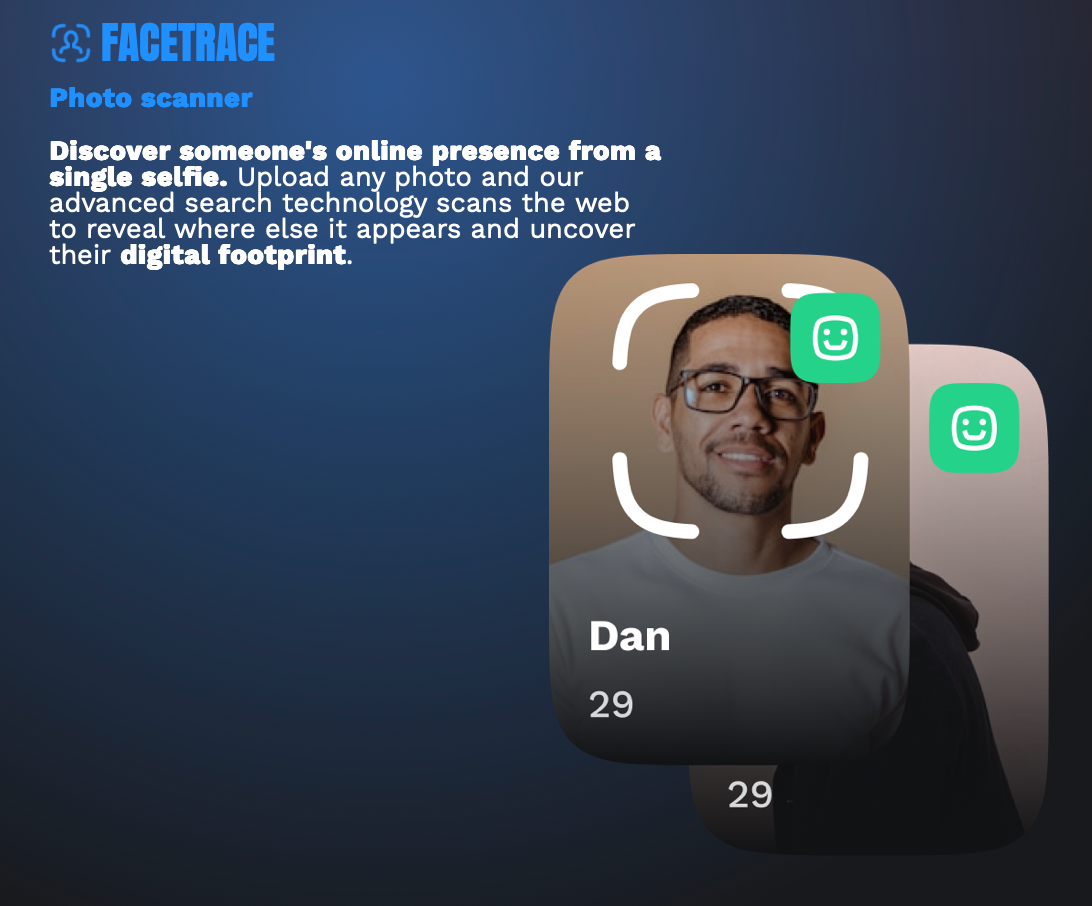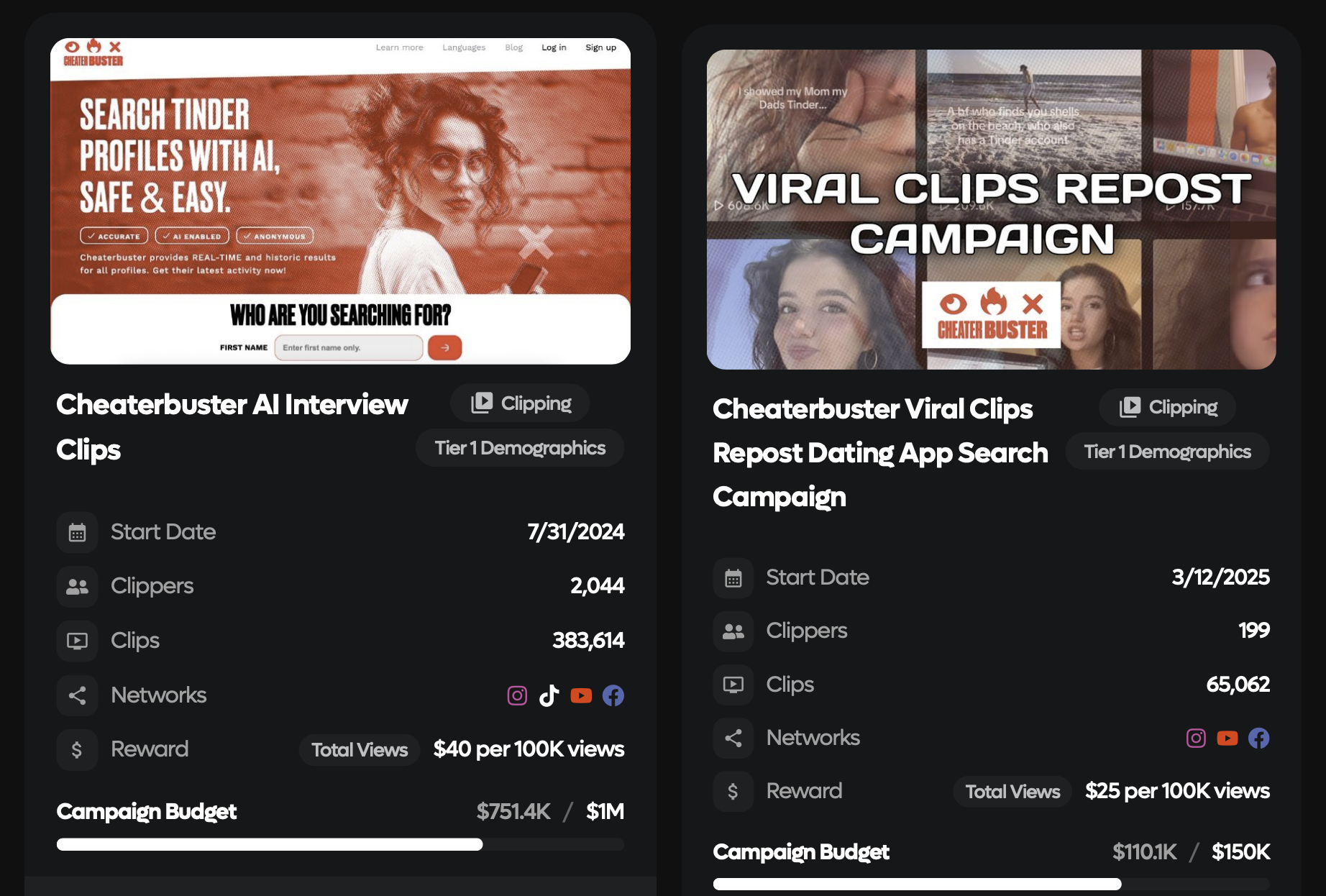
A number of easy to access websites use facial recognition to let partners, stalkers, or anyone else uncover specific peoples’ Tinder profiles, reveal their approximate physical location at points in time, and track changes to their profile including their photos, according to 404 Media’s tests.
Ordinarily it is not possible to search Tinder for a specific person. Instead, Tinder provides users potential matches based on the user’s own physical location. The tools on the sites 404 Media has found allow anyone to search for someone’s profile by uploading a photo of their face. The tools are invasive of anyone’s privacy, but present a significant risk to those who may need to avoid an abusive ex-partner or stalker. The sites mostly market these tools as a way to find out if their partner is cheating on them, or at minimum using dating apps like Tinder.
“I think that an app that allows you to find the dating app profile and general location of a person based on just one photo is an excellent tool for stalkers,” Eva Galperin, director of cybersecurity at the Electronic Frontier Foundation (EFF), told 404 Media. “A lot of this stuff that is framed as ‘tools to catch cheaters’ is perfect for abusers in the same way that ‘tools to catch thieves’ are perfect for stalkers.”
One of the sites, called Cheaterbuster, has been around for years under another name, Swipe Buster. It more recently introduced facial recognition features. 404 Media tested the site on two people with their consent. In both cases, 404 Media uploaded a photo of the person for Cheaterbuster to perform a facial recognition match. For the first test, the correct person appeared as the top result. For the second, they appeared slightly deeper in the search results.
Clicking on the results showed where that person had recently used Tinder. In the first case the result was accurate to a specific neighborhood in Los Angeles that the person visited. In the other, the result pointed to the particular part of Brooklyn that person lived in. Both locations were slightly outdated, but were still recent locations these people had visited.
Cheaterbuster does require users to enter a target’s known or suspected first name, age, and city. But the results provide options in case the provided information is inaccurate. Users can select “face matches, different names” to see people who look like the photo they uploaded. The results also show a list of people with similar names and ages in case the information is slightly off. They can also turn on a “show everyone” feature which displays all results for the age range regardless of the name entered.
The site’s FAQ says a target’s age “doesn’t have to be accurate to the day, but please put age as accurate as you can. Do not put 22 for a person who is 35, but if you are not sure if the person is 23 or 24, don’t worry—put whatever you think is closer.” For a location, the site suggests people put in an office, hotel, club, or friend’s house.
“Anyone can use this service, it is open for everyone. All you need is an internet connection and a valid email address,” the FAQ adds. Cheaterbuster charges a monthly fee of around $20 a month.
Another service 404 Media found is called CheatEye, which also says it uses facial recognition to surface specific peoples’ Tinder profiles.

The sites appear to rely on publicly available information from Tinder profiles, but that data cannot ordinarily be accessed through the normal Tinder app. A Tinder spokesperson told 404 Media: “We have no relationship with CheatEye or Cheatbuster. Not only do we not authorize this practice, it is squarely against our policies. We know that users trust us with their personal information to help them make meaningful connections. We do not take this lightly and intend to always keep that trust.”
Cheaterbuster and CheatEye did not respond to requests for comment.
Years ago a now infamous company called Clearview AI scraped social media and the web to build a massive database of peoples’ faces. It then sells a facial recognition tool to law enforcement agencies, including a recent $5 million contract with ICE. But facial recognition is far from only a government tool now. Sites like Pimeyes allow anyone to do much the same thing, by uploading a photo of someone and the site showing where else that person has appeared across the web. Students recently combined Pimeyes and other off-the-shelf people search tools with Meta Ray-Ban smartglasses to instantly dox strangers. Now, the same technology is being used by people to find specific Tinder users.
Cheaterbuster has gained much more attention recently after TikTok and Instagram accounts posted a tsunami of videos promoting Cheaterbuster and its facial recognition capabilities. In one a man interviews a couple and appears to do a facial recognition search of the woman, revealing a Tinder profile in her name. In one brainrot video (where a second clip, in this case of a farming video game, also plays on the screen), a man talks to a couple and demos Cheaterbuster to them. They allegedly find the man’s profile in Tinder after performing a facial recognition search. Even prolific grifter Ian Miles Cheong has promoted the company.

“The facial recognition scanned through the data gaps. This just came up,” an interviewer says in one of the videos while the screen shows various blurred photos from what is presented as the man’s Tinder profile.
It’s not clear if the people in these videos are genuine users because some are part of Cheaterbuster’s affiliate program, which pays content creators $9.99 for every paying subscriber they refer. The program is based on a referral platform called Clipping.io. Pierce Scholato, the CEO of Clipping.io and who appears in a Cheaterbuster video promoting the program, did not respond to a request for comment. Clipping.io offers to pay people through Venmo, Cashapp, or various cryptocurrencies.
Creators log into a dashboard where Clipping.io provides ready made vertical video for them to edit and distribute as they see fit. In one tutorial video 404 Media viewed, Scholato said Cheaterbuster is paying $40 for every 100,000 views.
“They are literally paying you more than YouTube and TikTok to post their clips,” Scholato says. The dashboard shows various Cheaterbuster focused campaigns and their alleged budget. One allegedly has a $1 million budget with more than $750,000 already spent. Another has a $150,000 budget with most of that already claimed, according to the website. The only available campaigns inside the Clipping.io dashboard are for Cheaterbuster.
People attempting to promote the app have also posted about it in Are We Dating the Same Guy Facebook groups, which are supposed to be spaces where women can warn each other about dangerous men.